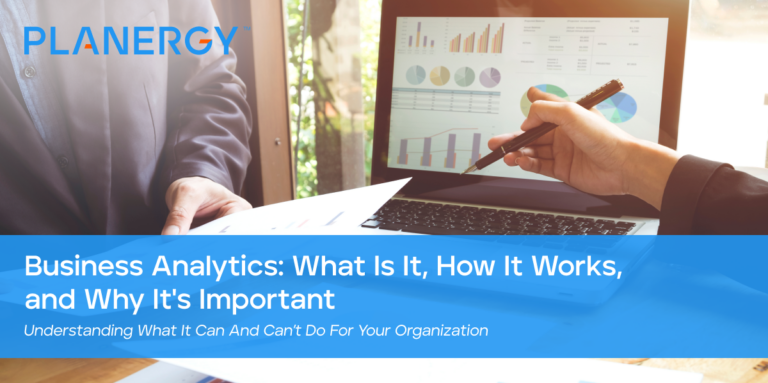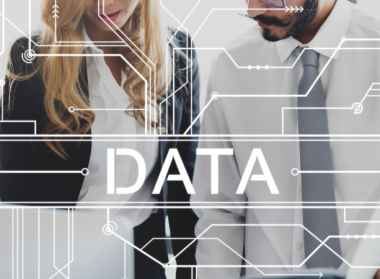According to TechTarget, business analytics (BA) is the “practice of iterative, methodical exploration of an organization’s data, with an emphasis on statistical analysis.
Business analytics is used by companies committed to data-driven decision-making.” To use business analytics, you must also use big data.
With BA, you treat your data as an asset and use the insights to gain a competitive advantage.
To be successful, you must have quality data and a team of skilled analysts who understand the technology and your business.
Your organization must also be committed to using the data to make decisions.
Business analytics can be separated into two main categories: business intelligence (BI) and statistical analysis.
BI is a basic approach that looks at historical data to gain more insight into how a department, a team, or a particular staff member has performed over a certain time period.
Statistical analysis, on the other hand, is a deeper approach that involves predictive analysis through the use of statistical algorithms to the historical data to make predictions about future performance.
It may also refer to using other advanced analytics techniques.
What is Business Analytics?
BA is a data-driven approach to strategic organizational decisions.
It uses statistical methods and technologies to analyze historical data sets, predict future trends, and make informed business decisions.
Types of Business Analytics
There are various types of BA, including descriptive, predictive, prescriptive, and decision analytics.
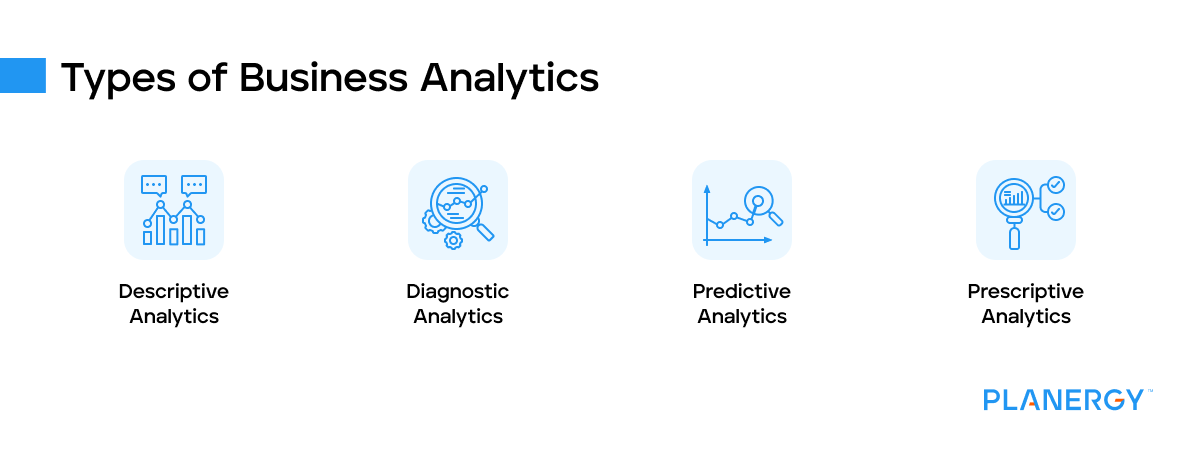
Descriptive Analytics
Descriptive analytics is the most fundamental type of business analytics. It focuses on analyzing historical data to provide insights into what has happened in the past.
For instance, a retail business could use descriptive analytics to understand sales trends during different seasons or times of the year.
Tools commonly used in descriptive analytics include data aggregation and data mining.
Diagnostic Analytics
Diagnostic analytics delve deeper into data to answer the question of why something happened.
For example, if a company’s quarterly profits declined, diagnostic analytics could be used to identify factors that contributed to this decrease, such as a decline in a specific product’s sales or increased operational costs.
Techniques utilized in diagnostic analytics include drill-down, data discovery, data mining, and correlations.
Predictive Analytics
Predictive analytics are used to forecast future events based on historical data.
For instance, an e-commerce company might use predictive modeling to determine which products will likely be popular in the upcoming season, helping them manage inventory effectively.
Predictive analytics employ statistical models and forecasting techniques to predict future trends, while assessing these predictions’ reliability.
Prescriptive Analytics
Prescriptive analytics aims not only to predict future outcomes but also to recommend actions to capitalize on these predictions.
For instance, an energy company could use prescriptive analytics to optimize its energy grid, suggesting when to use certain types of energy (like solar or wind) to meet demand and reduce costs.
This form of analytics uses optimization and simulation algorithms to advise on possible outcomes.
Specialized forms of BA include financial analytics, which focuses on analyzing a company’s financial data to assess its financial health, and procurement analytics, which involves analyzing procurement-related data to improve supply chain management and efficiency.
How Business Analytics Helps in Decision-Making
BA provides organizations with actionable insights, helping them to make data-driven decisions.
These insights can optimize operations, increase revenue, reduce costs, improve customer service, and gain a competitive edge.
Benefits of Business Analytics
The benefits of BA are numerous and include improved decision-making, increased operational efficiency, enhanced customer satisfaction, and increased profitability.
By leveraging BA, organizations can identify trends, patterns, and insights that can drive better business decisions and outcomes.
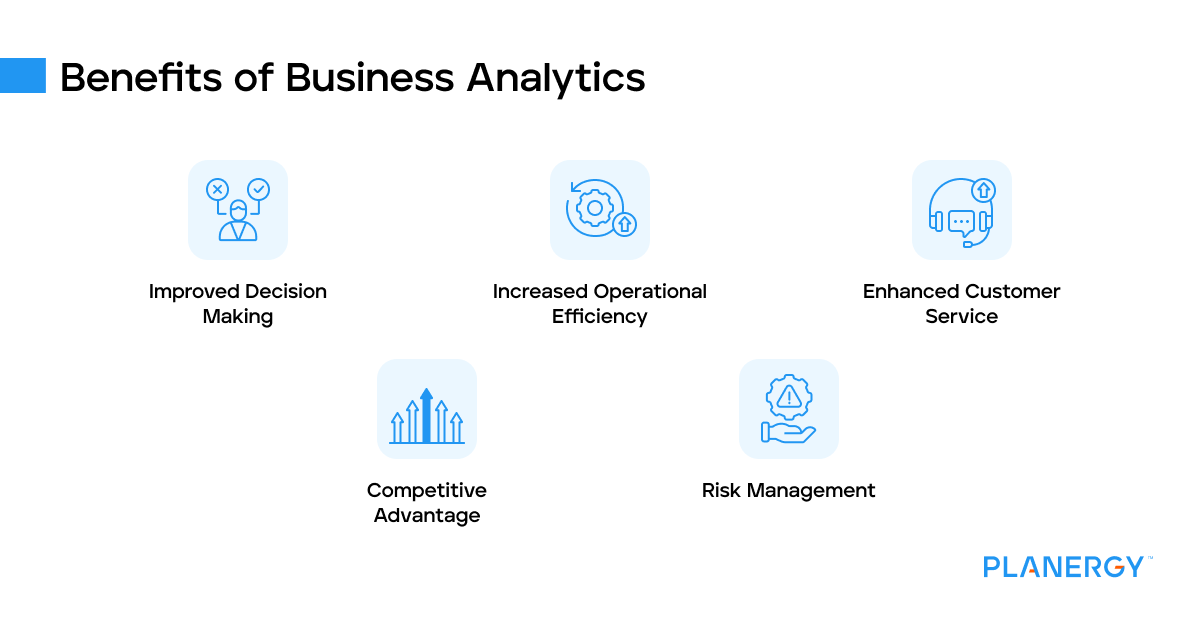
Improved Decision Making
By analyzing data, businesses can gain insights into customer behavior, market trends, and operational efficiency, which can guide strategic decisions and reduce uncertainty.
Increased Operational Efficiency
Business analytics can also increase operational efficiency.
For instance, by analyzing workflow patterns and processes, businesses can identify areas where resources are wasted, or processes can be streamlined.
This can lead to cost savings and improved productivity.
Enhanced Customer Service
With business analytics, companies can better understand their customers’ behaviors and preferences.
This can inform strategies for improving customer service and developing products or services that better meet customers’ needs, leading to increased customer satisfaction and loyalty.
Competitive Advantage
Businesses that use analytics effectively often have a competitive advantage over those that don’t.
They can anticipate market trends, adjust to changes quickly, and make more informed strategic decisions.
This can lead to increased market share and profitability.
Risk Management
By identifying trends and patterns, businesses can predict potential risks and take proactive steps to mitigate them.
This can also help businesses prepare for the future and ensure long-term success.
Challenges for Business Analytics
While BA can bring many benefits, it also presents several challenges.
These include data quality issues, lack of skilled analysts, difficulties integrating data from different sources, and challenges transforming data into actionable insights.

Data Quality and Management
Poor data quality can lead to inaccurate analysis, negatively impacting decision-making.
Additionally, managing large volumes of data can be complex and require significant resources.
Lack of Skilled Personnel
Business analytics requires specialized skills in areas such as statistics, data science, and computer programming.
A lack of skilled personnel can hinder a company’s ability to analyze data and gain meaningful insights effectively.
Privacy and Security Concerns
With the increase in data collection comes the challenge of ensuring privacy and security.
Businesses must navigate regulations related to data protection and privacy, and they must ensure they have robust security measures in place to prevent data breaches.
Integration with Existing Systems
Integrating business analytics tools with existing systems can be a complex and time-consuming process.
It requires careful planning and execution to ensure the new tools work seamlessly with current systems.
Resistance to Change
Implementing business analytics can face resistance from employees who are comfortable with existing processes and wary of change.
Overcoming this resistance often requires training and a clear communication strategy emphasizing analytics’ benefits.
Best Practices for Accurate and Insightful Business Analytics
To ensure accurate and insightful BA, organizations should follow these best practices:
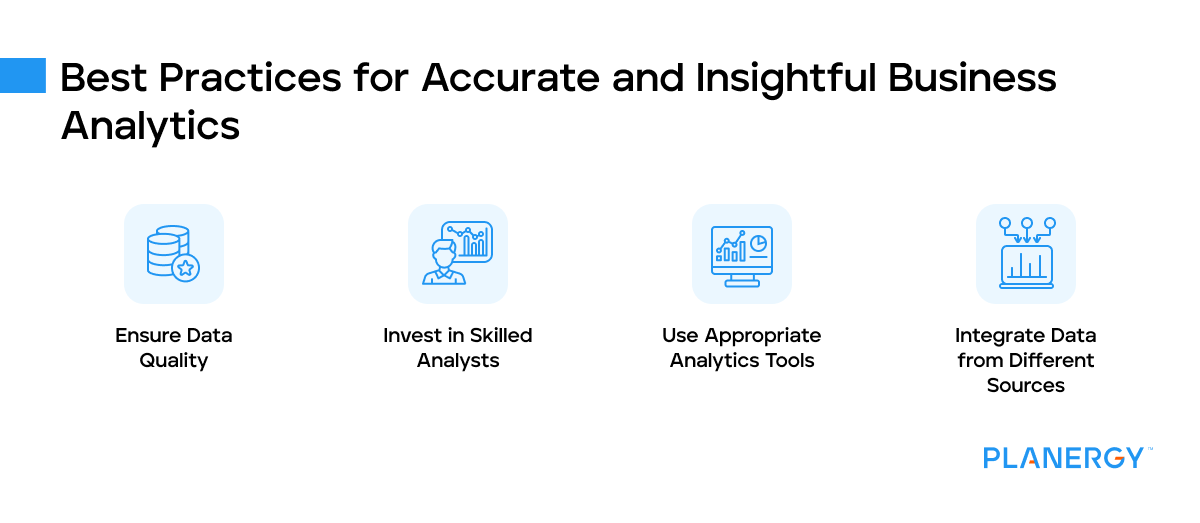
Ensure Data Quality
The first step towards accurate and insightful business analytics is ensuring the quality of your data.
Poor quality data can lead to misleading results, which in turn can lead to poor business decisions.
To ensure data quality, you should:
Cleanse your raw data: This involves identifying and correcting (or removing) errors and inconsistencies in your data.
Standardize your data: This means ensuring that all data is in a consistent format, which makes it easier to analyze. If you have a lot of data in Excel spreadsheets, make sure it follows the same formatting across the board.
Update your data regularly: Old or outdated data can also lead to inaccurate results. Make sure your data is up-to-date.
Invest in Skilled Analysts
While having quality data is crucial, it’s equally important to have skilled analysts who can interpret it.
These individuals should have a strong understanding of both your industry and the specific analytics tools you’re using.
They should also have adequate communication skills to discuss their findings effectively to non-technical stakeholders.
Investing in training for your analysts can greatly improve the accuracy and insightfulness of your business analytics.
Use Appropriate Analytics Tools
Countless analytics tools are available today, each with strengths and weaknesses.
Choosing the right one for your specific needs can greatly enhance your analytics efforts.
Some factors to consider when choosing an analytics tool include:
Ease of use: The tool should be intuitive and user-friendly.
Functionality: The tool should have all the features you need for your specific analytics tasks.
Integration capabilities: The tool should be able to integrate with other systems you’re using.
Integrate Data from Different Sources
Finally, it’s important to integrate data from different sources to get a complete picture of your business.
This could include data from your CRM system, website analytics, social media platforms, and more.
Integrating this data can provide deeper insights and help you make more informed decisions.
Business Analytics Tools
There are several varieties of business analytics tools available, such as:
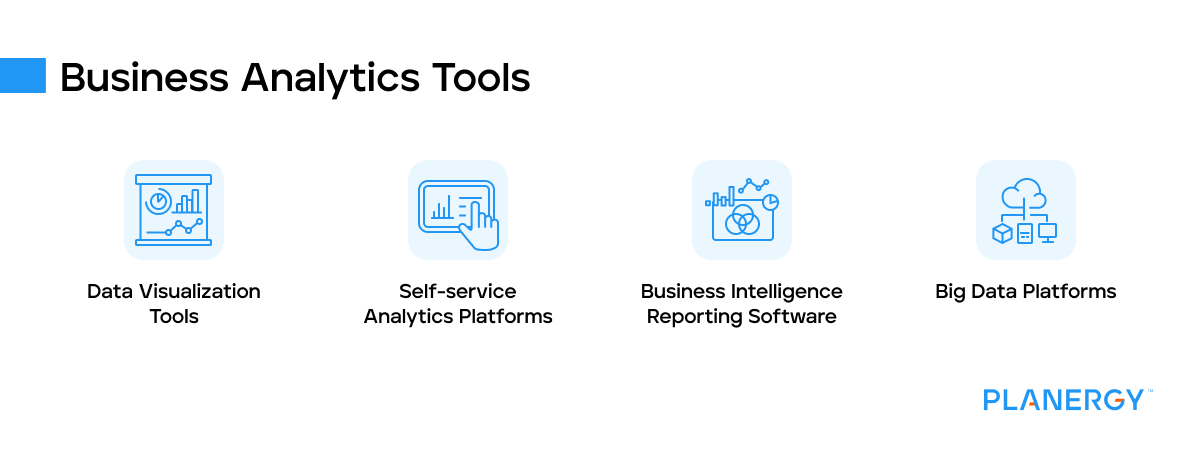
Data Visualization Tools
These tools convert the data into a visual format across dashboards in an attempt to make it easier for people to understand it and more quickly spot trends, correlations, and patterns for opportunities or problems.
Self-service Analytics Platforms
These do not rely on needing a data scientist or data analyst on staff to make sense of everything.
With these, businesses can easily manipulate data to find opportunities without needing to fully understand data technology or statistics.
Business Intelligence Reporting Software
These data analytics applications are designed to retrieve, analyze, and report data for business intelligence.
Big Data Platforms
These are IT solutions that combine the features and capabilities of multiple big data applications within a single solution.
With a big data platform, your company can develop, deploy, operate, and manage your company’s data.
Self-service platforms are increasing in demand because people want something that’s easy to use and doesn’t require any kind of special training.
Tools like Tableau and Qlix can be installed on a single computer, or on server environments for an enterprise-wide deployment.
Once things are running, business analysts, as well as employees with less specialized training can use the platforms to generate reports, web portals and charts to track specific metrics in data sets.
The Role of a Business Analyst
A business analyst uses data to assess processes, determine requirements, and deliver data-driven recommendations and reports to executives and stakeholders.
They bridge the gap between IT and the business to facilitate communication and collaboration.
Is Business Analytics a Good Major?
Yes, BA is a good major for those interested in working with data to solve business problems.
With the growing importance of data in today’s business world, there is a high demand for BA professionals.
If you’re someone with strong analytics skills, online courses are available to help you earn a Master of Science in Business Analytics to obtain a job working in business analysis.
Will Business Analytics be Replaced with Artificial Intelligence?
While AI and machine learning can automate some aspects of BA, it is unlikely to fully replace it.
Human analysts play a critical role in interpreting and applying the insights derived from BA.
Difference in Goals: Business Analytics vs. Business Intelligence
While both BA and BI use data to improve an organization, they have different goals.
BA is focused on predictive analysis to guide future business decisions, while BI is focused on descriptive analysis to provide a snapshot of current business operations.
Difference Between Business Analytics and Data Analytics
While both involve analyzing data, they are applied in different contexts.
BA focuses on data analysis for business decision-making, while data analytics is a broader field that involves analyzing data to extract insights, which can be applied in various fields, not just business.
BA is a critical component of modern business operations.
By creating a data-driven organization and culture, companies can leverage the power of BA to drive growth, efficiency, and success.
Getting Started with BI in Your Business Today
Business analytics is a powerful tool that allows businesses to make data-driven decisions, increase operational efficiency, enhance customer service, gain a competitive edge, and manage risks effectively.
However, it’s not without its challenges, including ensuring data quality, finding skilled personnel, maintaining privacy and security, integrating new tools with existing systems, and overcoming resistance to change.
Despite these challenges, the benefits are undeniable. In today’s data-rich world, understanding and leveraging this tool is crucial for any business aiming to stay ahead of the competition and achieve sustainable growth.
Business analytics is more than just a trend—it’s a game-changer that’s shaping the future of business. Armed with the insights from this post, you’re now better equipped to navigate the complex yet rewarding world of BA.

